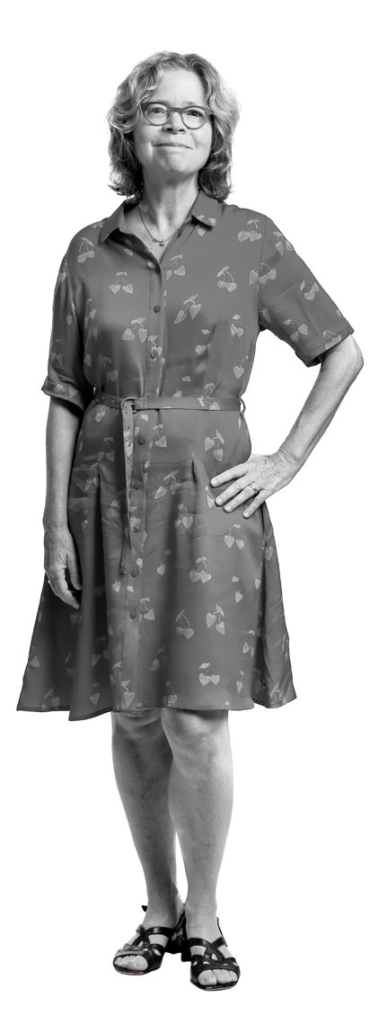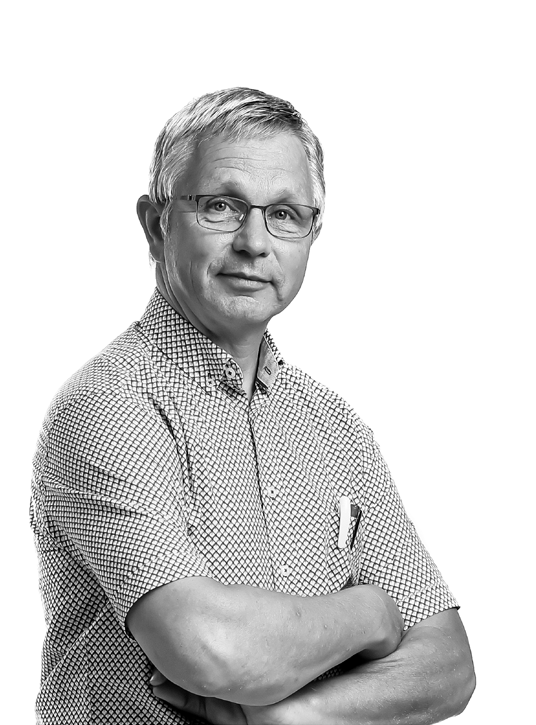
| About the vision |
|---|
| With the report ‘Re-rooting the Dutch food system: from more to better’, professor of Animal Production Systems Imke de Boer’s team got to the final round of the Rockefeller Food Prize. In a nutshell: in 30 years’ time, arable farmers will no longer use pesticides, but will practice strip cropping and agroforestry. Livestock farmers will no longer use food crops for livestock feeds, while our own faeces will be used as fertilizer. We will have halved our meat consumption and citizens will have shares in farms and buy directly from the farm. Read more about it on resource-online.nl. |
Jongeneel: ‘I think the plan is a good thought experiment in the right direction. The current agricultural system is in trouble, and we’ve got to aim for circular agriculture. The integrated approach appeals to me too: the plan also addresses the natural environment, health, wellbeing and human habitats.’
Termeer: ‘It is a holistic narrative, based on the doughnut economy: a food system within the earth’s carrying capacity. And it must be a social system. In contrast to the current food system, in which a handful of market players dictate how our food is produced, everyone should be able to participate.’
Jongeneel: ‘The current economy is one-sided in its focus on efficiency. Nevertheless, I think this new vision ignores the economy somewhat. Its starting point is land: arable land is for human food, grass is for animal production. That sounds like a paternalistic blueprint thought up by academics. Where is the space for economic activity?’
Is there space for that?
Termeer: ‘We don’t tell people how much meat and vegetables they are allowed to eat, but we indicate the limits of our planet’s carrying capacity. It is up to entrepreneurs to use the available resources as smartly and sustainably as possible. Fewer animal products is a logical consequence of that, as is the realization that we should use every part of an animal. The plan is definitely not a paternalistic blueprint; the aim is precisely more food democracy. And it dovetails nicely with existing initiatives like the Herenboeren cooperative, in which consumers become joint owners of a farm. In these kinds of initiative, which increase the role of the consumer, you notice that consumers opt to cut down on meat.’
We indicate the limits of our planet’s carrying capacity
Katrien Termeer

Jongeneel: ‘I support the idea of establishing requirements for food, but in a healthy economy you’ve got supply and demand – unrestricted. If you set limits to plant and animal production based on environmental thinking, I miss the role of economic considerations and consumer preferences. I think you will end up with only small quantities of meat, dairy produce and eggs left in our diet. I would wish consumers a more all-inclusive diet, and I believe that is compatible with sustainable agriculture.’
Termeer: ‘We have used the market mechanism for 50 years and we’ve seen the damage it’s done. It creates all kinds of externalities, such as problems to do with nature and the environment, which are not covered by the price. We are not saying that the government must totally control the market, but we do say it should set limits. No more nitrogen losses, for instance. Within that framework, farmers have plenty of scope to look for new value propositions with other parties.’
Jongeneel: ‘I think agriculture can also be made a lot more sustainable without saying: animal production only on grasslands. And then there’s the question: where is world trade in this plan? We know that many Asian and African countries have to import food. Which countries produce that food? Your narrative veers towards autarchy – a direction we mustn’t go in, and for which there is little support.’
I would wish consumers a more varied diet, and it is possible
Roel Jongeneel
Termeer: ‘The plan is a vision for the Netherlands, not for the world. In the wider world we are seeing a trend towards regional food networks – especially since the start of the coronavirus crisis. The follow-up process should indeed look at food systems in other countries as well. I do research in a few African countries, where I have seen that the emphasis on export has a disruptive effect on the local food systems.’
How realistic is this vision of the future?
Jongeneel: ‘I think the business model is a big stumbling block. The idea of paying farmers for other functions such as biodiversity and water management requires a fundamental change in the economic order and EU policy. Half the farmers in the EU now receive less than 1750 euros per farm per year from the agricultural policy – you won’t win them over with that. According to your plan, more money is needed, but I can’t see yet where that is to come from.’
Termeer: ‘That change comes step by step. You can already see a shift from income support to support for public goods such as nature values, so we’re moving in the right direction. We say: pay the farmers for social services such as water management, and for contributing to the climate policy, for which there are other funding sources you can apply to as well.’
Jongeneel: ‘Transformation of European policy and subsidies goes slowly because of the many and diverse interests…’
Termeer: ‘That transition can’t and doesn’t have to happen overnight. It actually needs to happen step by step, with democratic checks and balances in between. But an appealing prospect on the horizon does help us start taking those steps.
